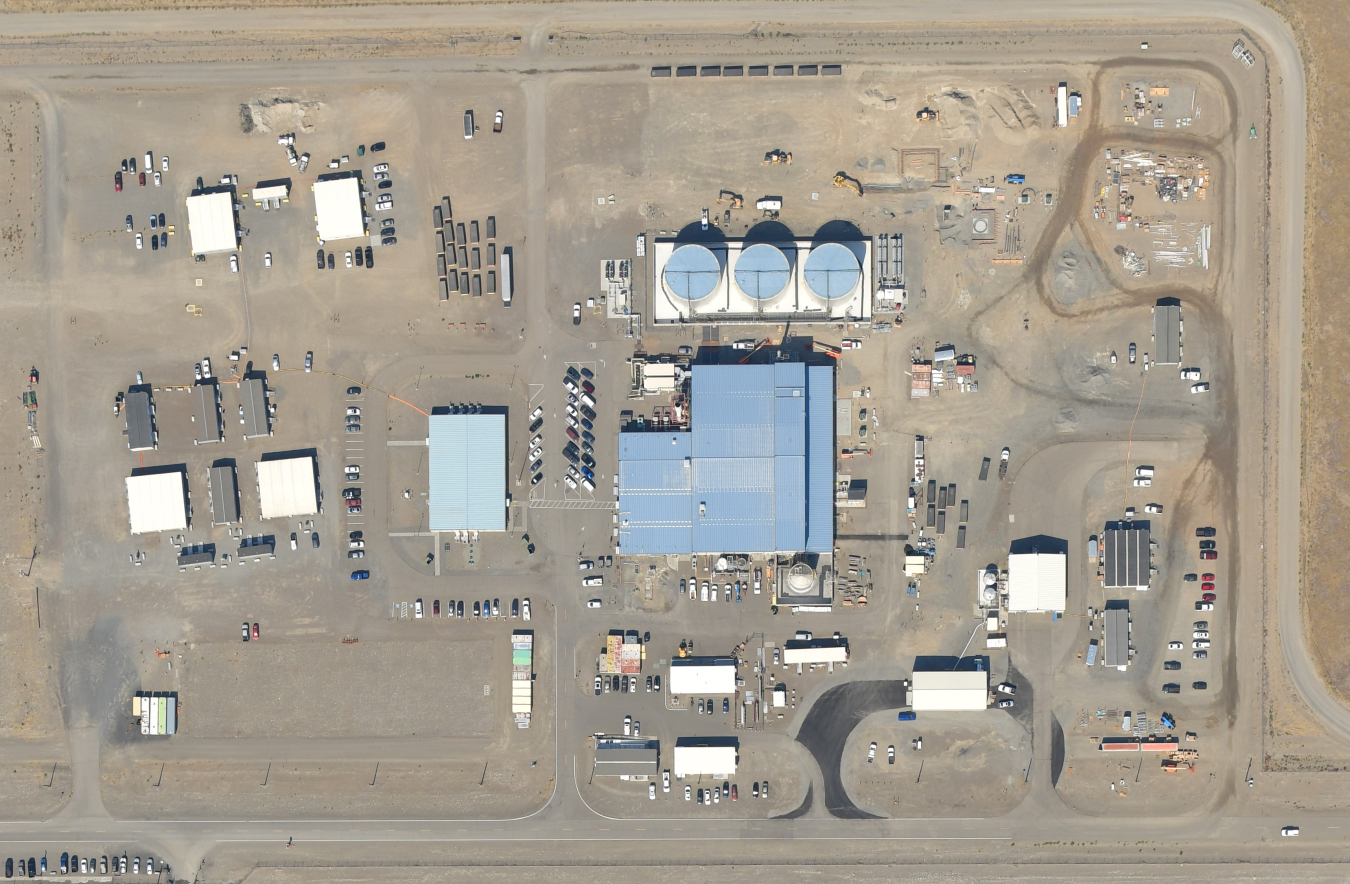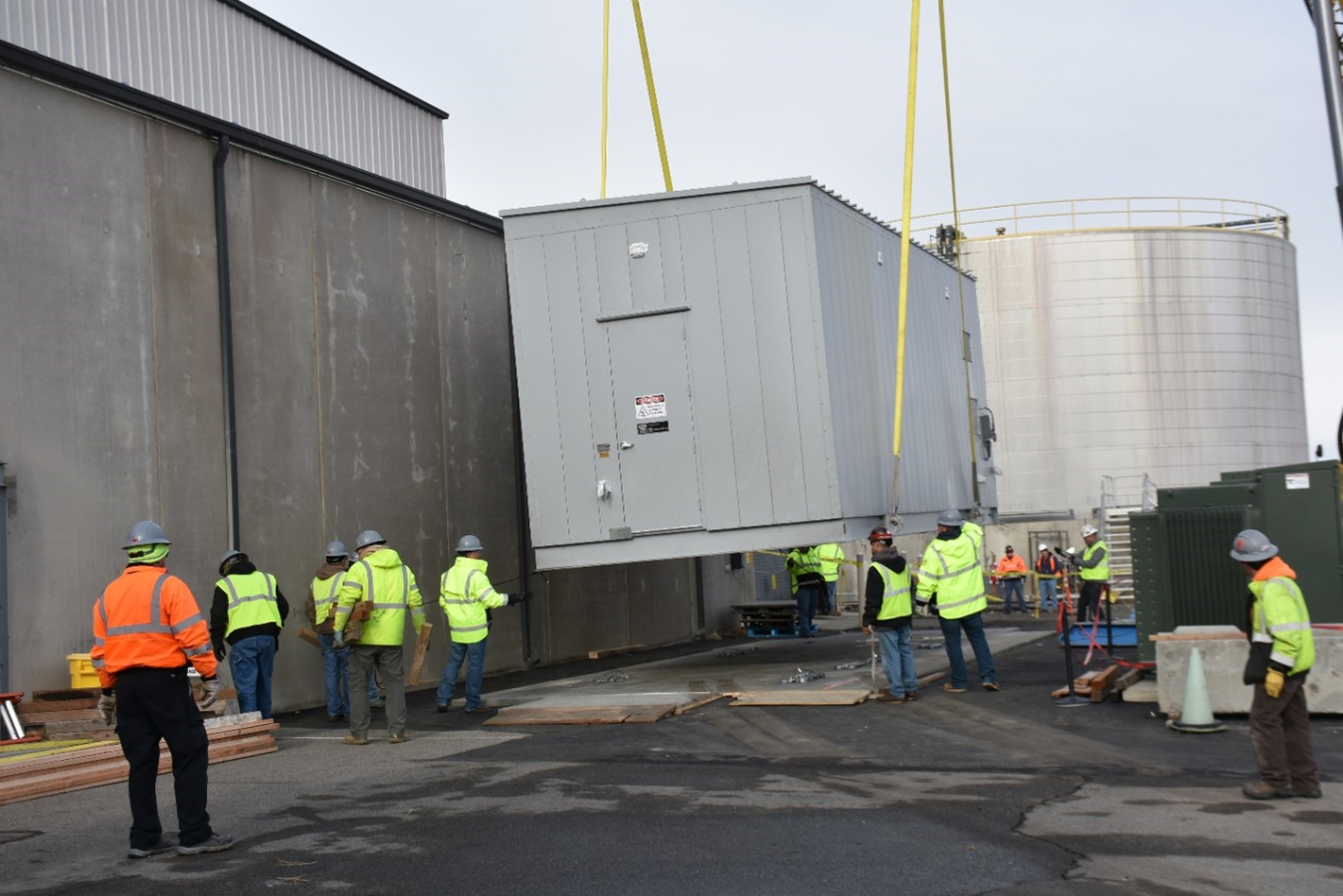An aerial view of the Effluent Treatment Facility on the Hanford Site, where workers are completing the final upgrades needed for the Direct-Feed Low-Activity Waste Program to treat tank waste.
Office of Environmental Management
February 7, 2023
After several years of renovations and upgrades, the Hanford Site’s Effluent Treatment Facility (ETF) is nearly ready for its key role in treating contaminated wastewater from direct-feed low-activity waste (DFLAW) operations.
EM Office of River Protection (ORP) tank operations contractor Washington River Protection Solutions (WRPS) finished construction on nine DFLAW upgrades at the ETF last year and is on schedule to complete the final improvements this spring. The new equipment will support processing additional wastewater that will be created by the Waste Treatment and Immobilization Plant (WTP) and other facilities during tank-waste treatment.
“We will see longer and larger processing campaigns at the ETF when DFLAW operations begin,” said Bibek Tamang, ETF program manager for ORP. “The upgrades will increase the capability, efficiency, and dependability of the facility, which is needed for 24/7 tank-waste treatment operations.”

The construction projects completed last year include a system that will collect and filter the air from processing equipment and tanks inside the ETF. Crews added another filtration system, along with a system to remove carbon dioxide gas in wastewater from the WTP. They also replaced aging motor controls, added new ones, and brought additional power to the ETF to support the many facility upgrades.
Workers also upgraded hardware and software in the facility’s monitoring and control systems so the ETF can better communicate with other site facilities during operations. This communication is important to the DFLAW Program, which links together highly interdependent and integrated systems and facilities in the tank-waste treatment process.
The WTP is expected to transfer as much as 5.4 million gallons of wastewater per year to the ETF from vitrifying or immobilizing in glass, low-activity tank waste. Hanford’s Integrated Disposal Facility (IDF), where containers of vitrified waste will be disposed of, will add another 1.2 million gallons of leachate, which is rain and dust-suppression water, annually during DFLAW operations. The IDF is designed to keep the environment safe by isolating waste and leachate through an engineered liner and collection system.
In addition to preparing the ETF to receive additional volume, the contractor has also been expanding the capacity of the nearby Liquid Effluent Retention Facility (LERF). Late last year crews finished constructing a fourth 7.8 million-gallon storage basin to receive and store wastewater prior to treatment at the ETF.
Tanker truck drivers will continue to deliver wastewater from other site facilities to the ETF for treatment. In October, crews finished constructing an additional station at the ETF for unloading tankers and are expected to finish expanding and upgrading the main load-in station this spring.
“As construction teams are wrapping up their work, ETF operations are just getting started,” said Adam Mathews, ETF and LERF manager for WRPS. “Now we begin testing the new systems and integrating them into full plant operations. It’s an exciting time. We are going to start up an entirely different facility from the one we shut down at the beginning of this outage.”
After testing is complete, WRPS will run all the new equipment in a processing campaign to ensure the ETF is ready to carry out its mission when 24/7 operations to treat tank waste begin.
To receive the latest news and updates about the Office of Environmental Management, submit your e-mail address.

